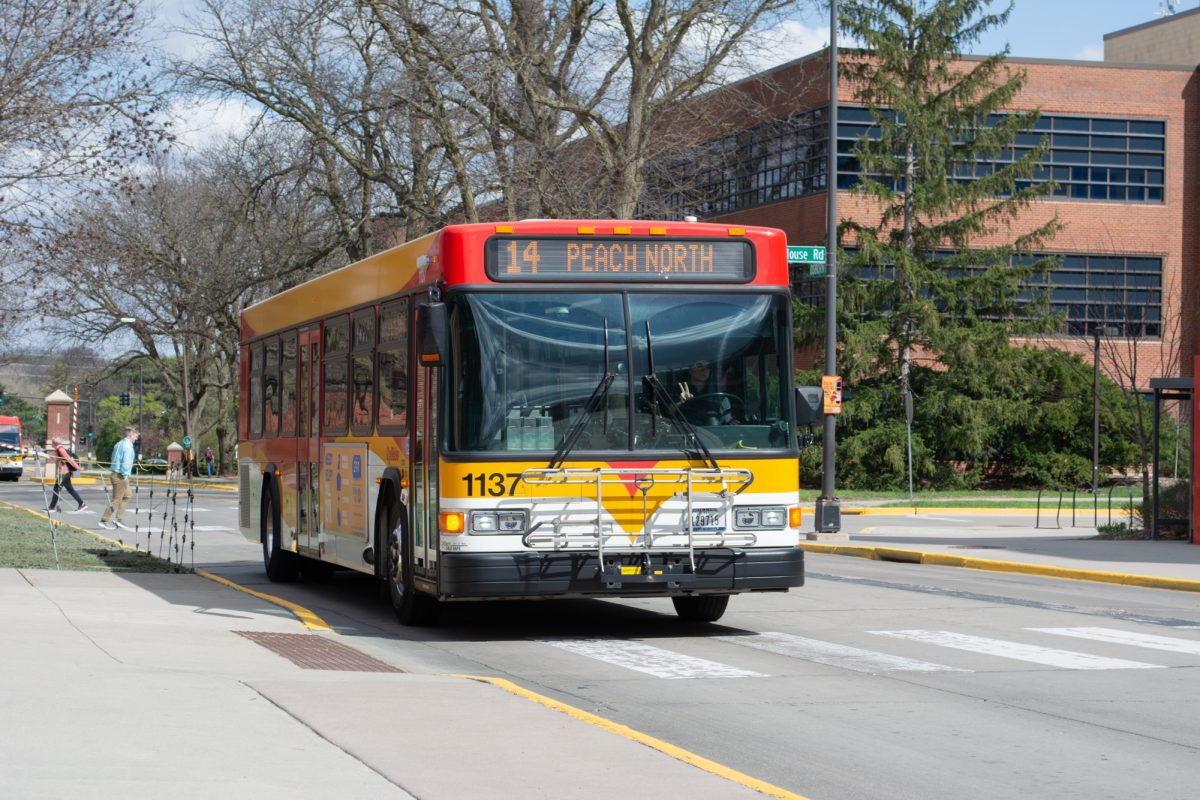Refurbished tunnel aids in ice research
February 27, 2014
Iowa State’s 20-year-old icing research tunnel is refurbished and ready to be put to work.
“The wind tunnel allows us to conduct experiments,” said Dr. Hui Hu, professor of aerospace engineering. “The tunnel also allows us to generate speed while controlling the temperature.”
The purpose of the research is to understand how ice builds up on certain objects.
It took three years to refurbish the research tunnel, which was donated 20 years ago by the Goodrich Corporation, which is now VTC Aerospace Systems. The project required polishing, repairing and repainting.
Wind turbines and airplane wings are the prime area of study. The experiments test the thickness of the ice, heat transfer and what materials affect ice buildup.
Hu said the tunnel allows temperature control up to -20 degrees Fahrenheit.
“Currently, we are doing research on the water transport behavior over airfoil surface,” said Kai Zhang, graduate assistant in aerospace engineering. “During the aircraft icing process, there will be water film, beads and rivulets if the ambient temperature is relatively higher and liquid water content is high.”
The tunnel can control the temperature and calculate the mass of the ice that forms in certain environmental conditions.
The ice on wind turbines and airplane wings have similar fundamentals, but the geometry and heat transfer is different. Therefore, the experiments will be slightly different.
There is a variety of experience levels working on the research project. Two professors, two graduate students, one post doctorate student and several undergraduate students make up the research team.
The team is also split up into full time, part time and temporary. Zhang is working on the project for two years while he is in graduate school.
“The amount of experiments that are conducted depends on the progress,” Hu said. “Collecting the data is the quickest part, but setting the experiment up and making sense of the data is what takes the longest time.”
There have been recorded accidents of ice falling on cars and creating damage from wind turbine wings. Some towns have even protested against the placements of wind turbines.
The research will help to solve these issues and create the most efficient systems to help prevent the ice buildups.
The research team reports their data by publishing a research paper and working directly with the industry. The industry are the ones who have an interest in actively acting on the real applications and demonstrating the new practices.
Zhang said the project’s main goal is doing the experiments under real icing conditions to reveal important water transport behaviors that are pertinent to the icing phenomenon. Zhang hopes the research will enhance the understanding of the icing process.
“The most difficult part of researching is finding funding,” Hu said. “It is important to show the ones funding that we are solving the problems, so therefore, we can continue researching.”






